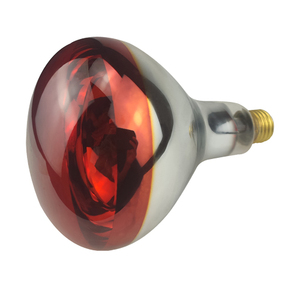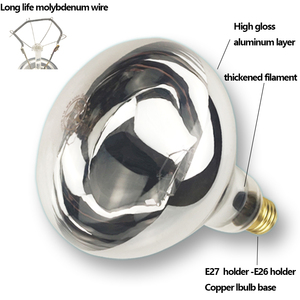(48 products available)






























































































































































































Solar heaters, also known as solar thermal systems, make use of solar energy to heat water. They are energy efficient and environmentally friendly. Solar heaters are generally available in numerous models, each differing based on design and the type of collector used to absorb that sunlight.
Solar heaters have several important features that make them efficient. Here are some of them:
Collector Area
The surface size of the solar collector is what determines the solar heater's collector area. It is an important factor that influences how much heat the system can generate. Larger collector areas allow more sunlight absorption, increasing heat production. This helps meet the user's desired hot water temperatures or heating demands more easily.
Absorber Plates
Vacuum tubes or flat panels are typical of solar collectors. The absorber plates are covered with special materials that efficiently absorb solar radiation. The plate then transfers this captured sun's heat to a fluid that circulates through the system. This design helps solar heaters generate hot water even when it is not very sunny outside. It allows solar energy to be used to heat water and provides a valuable alternative to conventional methods.
Heat Exchanger
In a solar water heater, the heat exchanger serves as a bridge between two systems. Heat exchangers transfer the heat gathered by the solar collectors to the water without directly mixing the two. The fluid heated by the sun passes through coils or tubes immersed in a storage tank. As it moves through these pipes, it warms up the stored water. This allows solar energy to be used for heating without directly combining fluids, keeping everything clean and safe.
Insulated Storage Tank
A storage tank for solar heaters is well-insulated to keep collected hot water from losing heat. Solar water heating systems include insulated storage tanks designed to minimize heat loss. They are insulated with high-quality materials that minimize the transfer of heat outwards. This quality helps retain the temperature of already heated water, so less additional energy is required later to reheat it when the stored water gets used.
Solar Controllers and Thermostats
Solar heaters use intelligent controllers and thermostats to manage their operation efficiently. These devices help monitor temperatures in the collectors and storage tanks continuously. They allow users to know how hot the water is at any time. The smart controls automatically adjust valves or pumps based on real-time temperature data from sensors.
Solar water heaters can be used in many places. Here are some modern usage scenarios that showcase the versatility of solar heaters:
Solar collector area:
The size of the solar heater is critical. Large areas will collect more energy from the sun, but more energy will be required to heat large quantities of water.
Storage tank:
The tank's capacity must suit the number of people using the hot water each day. It must be well insulated to prevent heat loss.
Climate:
In regions with plenty of sunlight, solar heating works well. It is effective in areas without much sun because solar collectors can preheat water before it enters a conventional heater. Heater systems use backup conventional heaters on cloudy days.
Budget and incentives:
Solar water heaters have a high upfront cost. Their cost, however, is offset by Government rebates or taxes, such as greenhouse gas emissions trading schemes and renewable energy certificates. Solar heaters also reduce electricity or gas bills. Consider the long-term savings against solar water heating system costs when determining whether it is affordable.
System type:
Solar water heating systems have either flat plates or evacuated tubes. Flat plate systems tend to be cheaper and simpler, while evacuated tube systems are more expensive but heat water faster, especially when it's cold outside.
Installation:
Attach the solar heater's collectors to the roof properly. Install pipes and pumps so that water circulates well between collectors and the storage tank. Skilled solar installers must connect the system to the home's hot water lines. Solar water heater systems require regular maintenance.
Backup heating:
Choose a reliable backup heating solution for cloudy days or when hot water use is high. Conventional electric or gas heaters work well for this. Cooking and heating your home use the same energy source. It is efficient to use the sun to preheat water before using the backup heating.
Energy efficiency:
Energy-efficient fixtures and appliances reduce the size of solar water heating systems because they require less hot water. Efficient models use less water, too.
Q: How long does it take a solar heater to heat water?
A: Typically, a solar heater can take anywhere from 1 to 6 hours to heat the water, depending on the size of the tank, the solar collector area, and the intensity of sunlight. In very cold weather, it may take longer.
Q: What size solar water heater do I need?
A: To determine the ideal size for a solar water heater, consider factors like the number of people in the household, the solar heater's daily hot water demand, and available roof space for solar collectors. Generally, larger families require bigger storage tanks and collectors to meet their hot water needs.
Q: Can solar water heaters work on cloudy days?
A: Solar water heaters can still function and heat water on overcast or cloudy days because diffuse sunlight is sufficient to power the system. Most solar water heaters have well-insulated storage tanks that keep water hot even when sunlight is limited. Backup heating systems also provide hot water when solar collectors receive little sunlight.
Q: What temperature can solar water heaters reach?
A: The temperature a solar water heater can achieve depends on the type of system, collector efficiency, and sunlight conditions. Typically, solar heaters can heat water to around 140°F (60°C) to 190°F (88°C), and some high-temperature systems can even exceed 200°F (93°C).